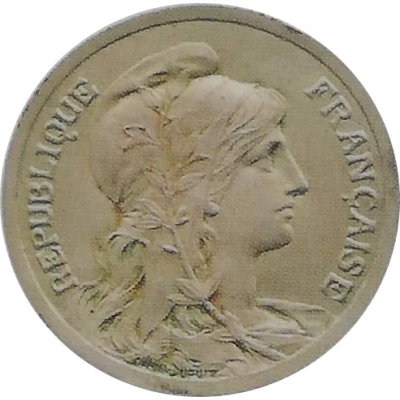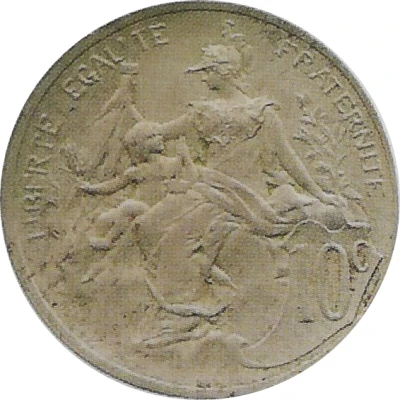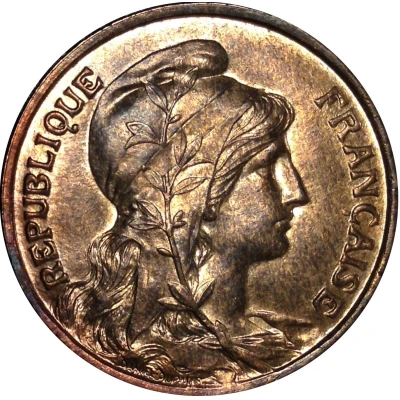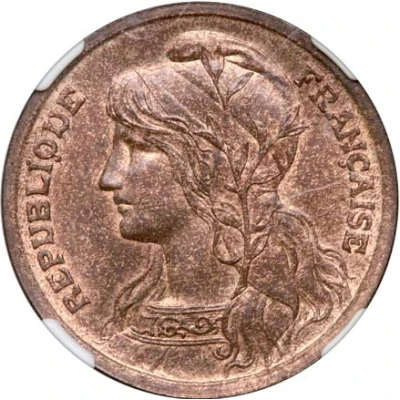
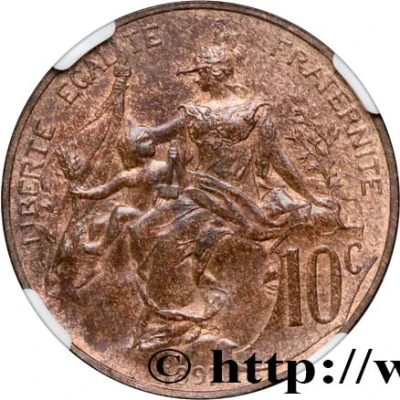

© CGB
10 Centimes Bronze essay, head left
| Bronze | 10 g | 30 mm |
| Issuer | France |
|---|---|
| Period | Third Republic (1870-1940) |
| Type | Pattern |
| Years | 1897-1898 |
| Value | 10 Centimes (0.10) |
| Currency | Franc (1795-1959) |
| Composition | Bronze |
| Weight | 10 g |
| Diameter | 30 mm |
| Shape | Round |
| Technique | Milled |
| Orientation | Coin alignment ↑↓ |
| Demonetized | Yes |
| Updated | 2024-10-04 |
| Numista | N#200574 |
|---|---|
| Rarity index | 95% |
Reverse
Script: Latin
Lettering:
LIBERTE EGALITE FRATERNITE
10 CENTIMES ou 10c
Engraver: Jean-Baptiste-Daniel Dupuis
Edge
Plain
Comment
GEM#30.1Obverse: Collar with frieze
The word "ESSAI" hollow on the edge. On the reverse, the word "CENTIMES" in full, tilted in a ribbon, as well as the date obliquely. The size of the "10" on the face is smaller than that of the pre-series without the ribbon.
GEM#30.2 (en illustration)
Obverse: Collar with frieze
Without the word "TEST". Large listel. Only "C" of cents is present, this is the reverse of the final type.
GEM#30.3
Obverse: Collar without frieze
Without the word "ESSAI", broad listel. The "CENTIMES" in full, inclined in a ribbon, as well as the date obliquely. The size of the "10" on the face is smaller than that of the pre-series without the ribbon.
GEM#30.4
Obverse: Collar without frieze
Matt blank, the word "ESSAI" hollow on the edge. Large listel on the obverse. Reverse of the final type (only "C" of cents is present).
GEM#30.5
Obverse: Collar without frieze
Matt blank. "TEST" in relief, tilted in the cartridge. The strike is from 1898 but the obverse engraving is from 1897.
Interesting fact
The Pattern 10 Centimes coin was designed by French sculptor and engraver, Oscar Roty, who was known for his work on various French coins and medals during the late 19th and early 20th centuries. The coin features a left-facing portrait of a young woman representing the Republic of France, surrounded by a wreath of olive branches and the motto "LIBERTE EGALITE FRATERNITE" (Liberty, Equality, Fraternity). The coin's design was meant to symbolize the values of the French Republic and was intended to be used as a pattern for future coinage, but it was ultimately never adopted for circulation.
